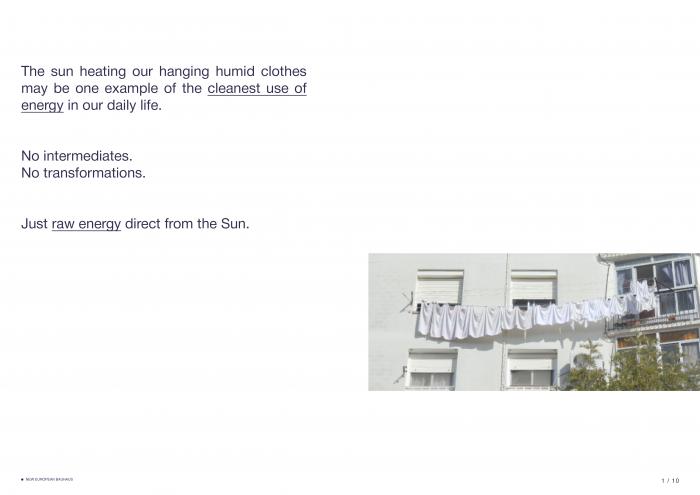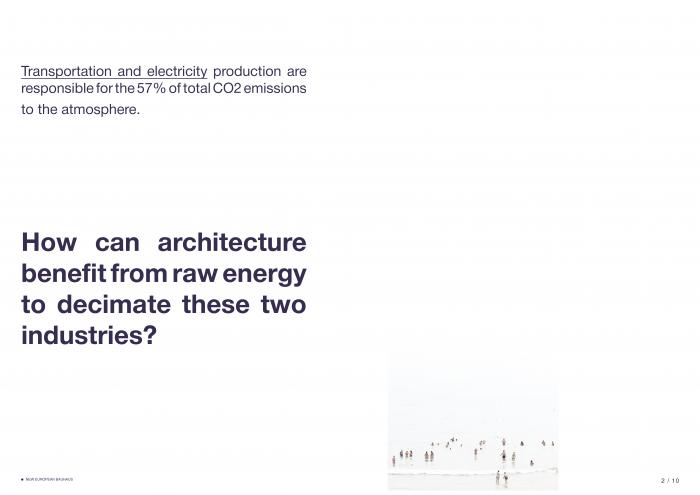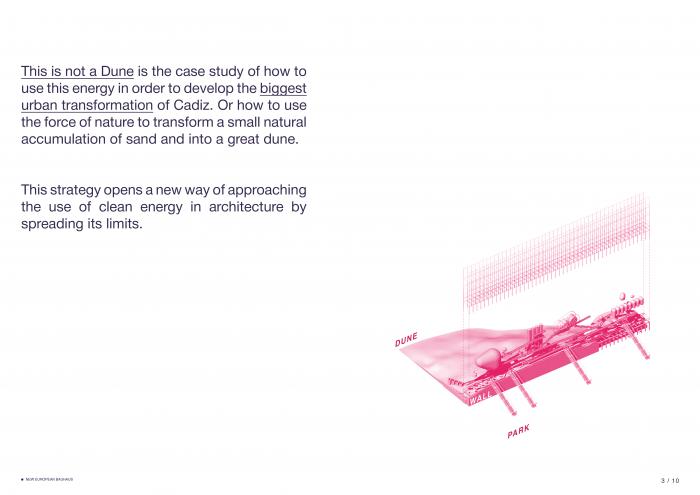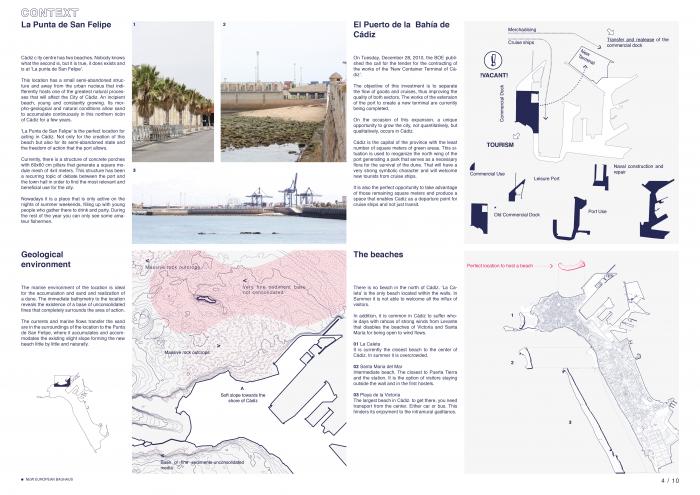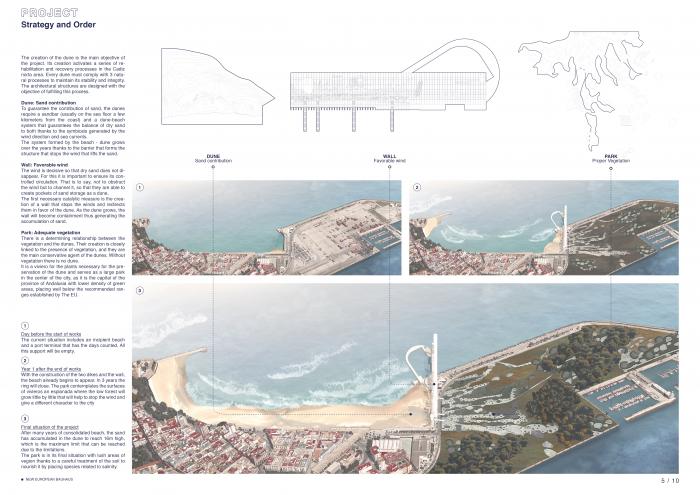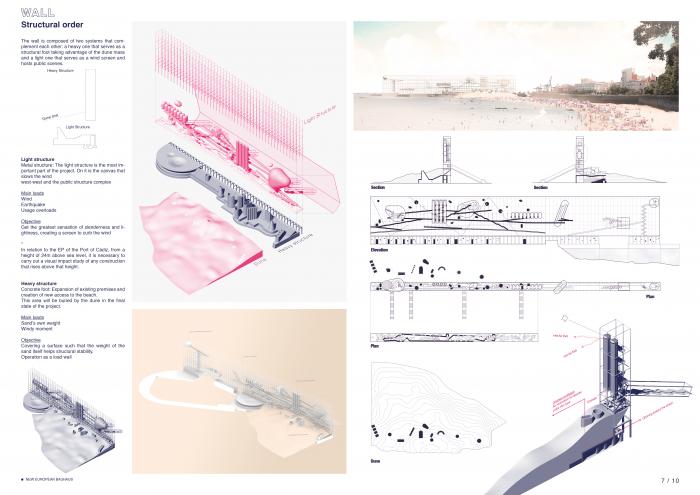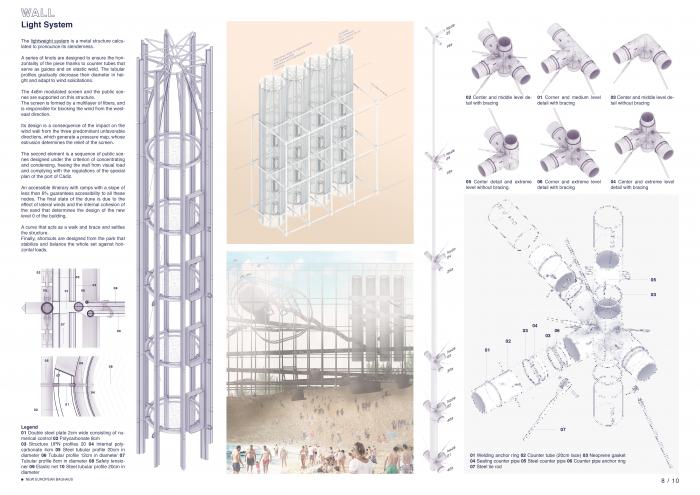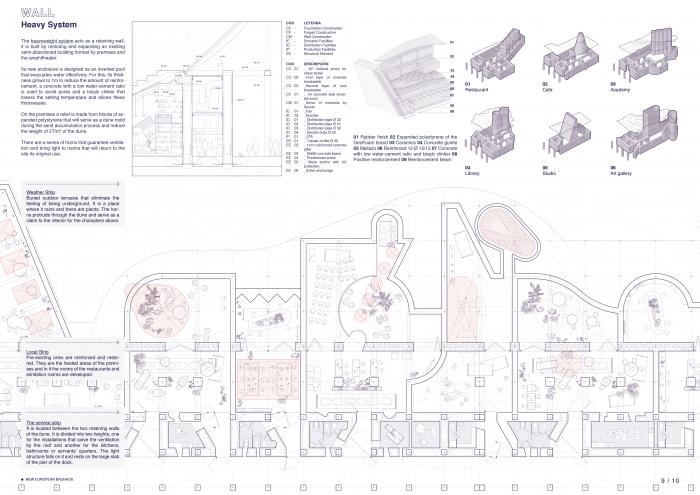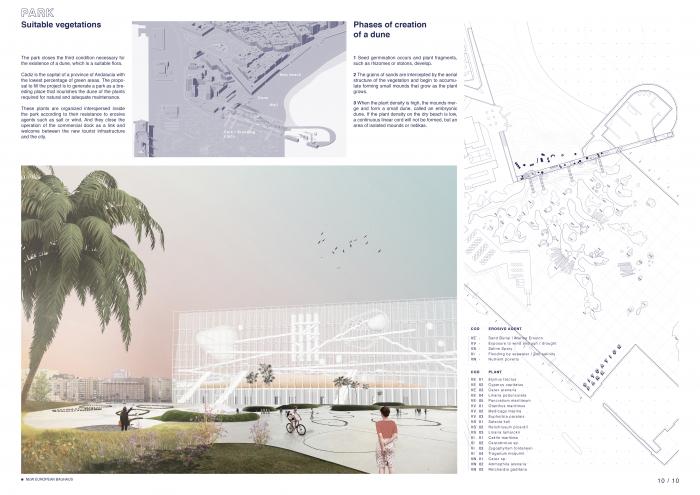I. SUMMARY INFORMATION
Project
268984
Status
Submitted
Award category
Regenerated urban and rural spaces
You want to submit
NEW EUROPEAN BAUHAUS RISING STARS : concepts or ideas submitted by young talents (aged 30 or less)
Project title
This is not a Dune
Full concept/idea title
A case study on how to benefit from raw energy to develop healthy urban transformations
Description
The sun heating our hanging humid clothes may be one example of the cleanest use of energy in our daily life.
No intermediates. No transformations. Just raw energy direct from the Sun.
Transportation and electricity production are responsible for the 57% of total CO2 emissions to the atmosphere. How can architecture benefit from raw energy to decimate these two industries?
This is not a Dune is a case study on how to use raw energy to develop the biggest urban transformation of Cádiz.
Where is your concept/idea being developed or intended to be implemented in the EU?
Spain
Andalucía
Paseo Almirante Pascual Pery
36.5297800
-6.2946500
Cádiz
11004
II. DESCRIPTION OF THE PROJECT
Please provide a summary of your concept/ idea
In order to optimize their maritime transit, the city of Cadiz is constructing a new commercial dock to host and organise cruises and merchat vessel. This operation opens up an only and unique opportunity to the future of an historic city. Since its completion centuries ago, the city has never been able to expand.
To face this exciting challenge. The city has to draw up a sensitive and conscious plan to the serious climate crisis that we are experiencing and serve as a model and example for the development of sustainable and healthy urban transformations. The plan is a multi-layered strategy that serves various problems of the city and its urbanism while displaying a totally sustainable model of construction using RAW ENERGY that the earth provides. Without any kind of transformation or intermediaries.
The project is the creation of a DUNE.
To achieve the objective respecting not only the consumption and energetic origin but also the care of the flora and fauna of the place, the project is divided into 3 main parts that every dune requires to be healthy and totally inmerse in the ecosystem.
Dune – Sand constribution: To guarantee the contribution of sand, the dunes require a sandbar (usually on the sea floor a few kilometers from the coast) and a dune-beach system that guarantees the balance of dry sand to both thanks to the symbiosis generated by the wind direction and sea currents.
Wall – Favorable wind: The wind is decisive to avoid dry sand from disappearing. It is important to ensure a controlled circulation. Not obstructing the wind but to channelling, to create pockets of sand storage as a dune.
The first necessary catalytic measure is the creation of a wall that stops the winds and redirects them in favor of the dune. As the dune grows, the wall will become containment thus generating the accumulation of sand.
Park – Adequate flora: A Plant nursery as a park. The main conservative agent of the dunes. Without vegetation there is no dune.
Please give information about the key objectives of your concept/idea in terms of sustainability and how these would be met
Since Transportation and electricity production are responsible for the 57% of total CO2 emissions to the atmosphere. The main objective s to focus on how to develope a huge urban transformation, using RAW ENERGY while other problems that are not usually included in construction process such us flora and fauna.
The project is based in 3 big statements on sustainability:
Raw Energy
The main objective of the research is to focus on the construction process by studying and analyzing the potencial of a location surroundings. By controlling wind and sea flows, we can benefit from its energy to build up a new realm with the minimum energy production efforts.
Readymade
It is mandatory to not generate more waste. The abandon spaces and buildings are studied to build the proposal from their structures and foundations. Not only buildings or constructions are considered Readymade objects. Natural accumulations such as sand and sediments are indicators of energy flows that affect the area. Both of them are part of the readymade to build up from.
Synergies
The final project is divided into three different segments: Dune, Wall and Park. All of them are interconnected to strengthen each other. The Wall works as wind flow controller. Keeping the sand away from west winds, but also reducing the speed of flow affecting the park.
The Dune feeds the beach of sand working as a sand bank. It is also the habitat to local plants the were once removed from their place.
The Park is the catalyst to enlarge the dune in early phases but also is the plant nursery to have permanent access to treat damaged flora.
Please give information about the key objectives of your concept/idea in terms of aesthetics and quality of experience beyond functionality and how these would be met
The province and the city of Cadiz are strongly linked to a singular and determined imaginary based on its great sand beaches and its industrial portuary constructions on which its economy has been based.
That is why the image of the project seeks to give continuity to this historical imaginary, updating it and putting these signs of identity into value. Rejecting the globalization that leads to the detachment and loss of the identities of a place.
The great beach would be the third beach, the only one facing the west of the city. For the beach, the sand located on the sea floor of Cádiz is used. The currents and marine flows transfer the sand are in the surroundings of the location to the Punta de San Felipe, where it accumulates and accommodates the existing slight slope forming the new beach little by little and naturally. The wall is a structure that designed under a strong industrial identity, seeks to be transparent and light. A structure that will remember the main use of the area in which it is installed. Finally, the park has been designed with curved and irregular geometries as they would have been drawn and eroded by the wind, as occurs in the interurban areas of the province.
Please give information about the key objectives of your concept/idea in terms of inclusion and how these would be been met
The Project is a completely public intervention and accessible to all citizens. Its main objectives are based on balancing and uniting:
Find the balance of the population of different ages in the same neighborhood or study area in relation to the whole of a city. Increase the cohesion of groups of different ages from contact in the same physical space.
Find the balance of the population of different origins. Increase the cohesion of groups of diverse origins from contact in the same physical space.
Find the balance of the population of different incomes. Increase the cohesion of groups of different incomes from contact in the same physical space.
Please explain the innovative character of your concept/ idea
The project arises with rhythms that are alien to the speed and short-termism that takes over the daily life of today's architecture. A slow and thoughtful project, that is not in a hurry or pressure. Its main objective is biomimicry. Be consistent with the biosphere, its ecosystems, its rhythms, capacities and metabolism. The intelligence of the project lies in knowing how to build with nature and not against it.
Although the Jevons paradox shows us how eco-efficiency and the optimization of resources, it is not the way to go since it does not manage to reduce the negative effects and the consumption of natural resources. The higher the efficiency, the greater our capacity to consume and therefore to generate waste.
This model is the one that is in force right now and is advocated by all ‘sustainable’ architectures.
'This is not a Dune', wants to reject and position against strategies and methodologies that have been proven sterile. Advocating a construction with rhythms and speeds marked by the environment in which it is installed.
Please detail the plans you have for the further development, promotion and/or implementation of your concept/idea, with a particular attention to the initiatives to be taken before May 2022
The viability of the project depends on the detailed study of three factors: the marine currents, the geological formation of the sea floor and its bathymetry and the flows and wind currents in the area throughout the year. In order to carry out these studies in the most faithful way, the help and support of the Center for the Studies of Ports and Coasts 'Centro de Estudios de Puertos y Costas (CEPYC, Ministry for the Ecological Transition and the Demographic Challenge of the Government of Spain)' is sought.
The three lines of study are going to be held parallel with a delay of 2 weeks from the biginning of one to another, and are marked to be interspersed in time.
In conjunction with CEPYC, a study plan and data collection will be carried out at 6 + 4 months and a subsequent simulation at the facilities in Madrid, to begin in September, to recreate the most determining conditions in a physical model. Once the data has been corroborated, negotiations with the Cádiz authorities would begin, to carry out a Mock-up at the project site from June 2022.
III. UPLOAD PICTURES
IV. VALIDATION
By ticking this box, you declare that all the information provided in this form is factually correct, that the proposed concept/idea has not been proposed for the New European Bauhaus Rising Stars Awards more than once in the same category.
Yes
